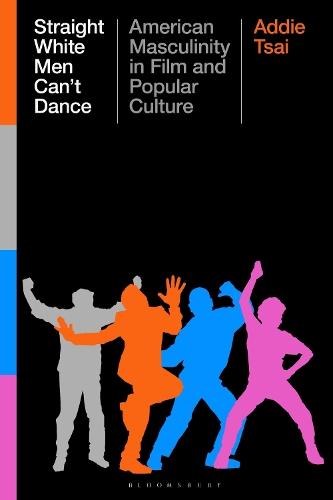Overview
Straight White Men Can’t Dance: American Masculinity in Film and Popular Culture investigates a trope proliferating throughout popular American media over the last half-century: that straight white men can’t dance. Addie Tsai traces this reiterative moving image of vaudevillian buffoonery in film, television, and video from the mid-1980s to present-day. During the height of homophobic hysteria in response to the AIDS epidemic, dance began to be used as a marker to scrutinize white men’s position within homosexuality and masculinity. Therefore, white men could misperform good dancing to more securely sit within hegemonic masculinity. Tsai establishes how ethnic mimicry within American popular media, even that of white masculinity, is produced and reiterated from the 19th-century theatrical practice of blackface minstrelsy. This history resurfaces in one of the exceptions to the trope: when white men use the hip currency of blackness to affirm their (dancing) masculinity through theft and positionality. By revealing how dance in American popular media reifies and problematizes gendered and racialized economies, Straight White Men Can’t Dance demonstrates how the image of the buffoonish white male dancer operates as a smokescreen for the more violent manipulative forces of the reigning figure of white supremacy.
Full Product Details
Author: Addie Tsai (William & Mary, USA)
Publisher: Bloomsbury Publishing PLC
Imprint: Bloomsbury Academic
Dimensions:
Width: 15.60cm
, Height: 1.80cm
, Length: 23.80cm
Weight: 0.960kg
ISBN: 9781350443563
ISBN 10: 1350443565
Pages: 216
Publication Date: 18 September 2025
Audience:
College/higher education
,
Professional and scholarly
,
Tertiary & Higher Education
,
Professional & Vocational
Format: Hardback
Publisher's Status: Active
Availability: Manufactured on demand 
We will order this item for you from a manufactured on demand supplier.
Table of Contents
Introduction: The Straight White Man Dance: An Origin Story Chapter 1: Eddie Murphy, the Reagan Administration and the Great American Wimp Chapter 2: ""Take Me to the Place Where the White Boys Dance"": Tom Hanks's Manchild and Steve Carell's Buffoon Chapter 3: Be a Man: Swayze’s Beefcake, Squier’s Fall from Grace, Bing’s Homophobia, and the Lonely Island’s Parody Chapter 4: “Pretty Fly for a White Guy”: Hughes’s Modern-Day Minstrel, Ronald Miller’s African Tribal Ritual, and Napoleon Dynamite’s Triumphant Debut Chapter 5: “Just Bumbling Around”: Gondry’s Wallflower, the Justins’ White Negro, and Jonze’s Robots Chapter 6: Madmen Unite: Patrick Bateman, A Clockwork Orange, and the Joker Conclusion: “C’mon, Will You Dance, My Darling? And We’ll Get There Yet” Bibliography Index
Reviews
This is a superb book for anyone curious about how media, historically and currently, contribute to and undergird systemic exclusions. Tsai offers a wonderful example of interdisciplinary research that benefits dance studies, film studies, gender studies, queer studies, critical race studies, media studies, and communication studies. * Kate Mattingly, Dept of Communication & Theatre Arts, Old Dominion University, USA *
Author Information
Addie Tsai is an Assistant Teaching Professor of Creative Writing at William & Mary, USA, where she is Affiliate Faculty in Gender, Sexuality, and Women’s Studies. She is the author of Dear Twin (2019), included in American Library Association’s Rainbow List in 2021, and Unwieldy Creatures (2022), a Shirley Jackson finalist for Best Novel. They collaborated with Dominic Walsh Dance Theater on Victor Frankenstein and Camille Claudel, among others. She is the founding editor in chief for just femme & dandy. Her articles have been published in LO:TECH:POP:CULT: Screendance Remixed (2024), The Bloomsbury Handbook of Dance and Philosophy (2021), Slapstick: An Interdisciplinary Companion (2021), and The International Journal of Screendance.
Tab Content 6
Author Website:
Countries Available
All regions
|



